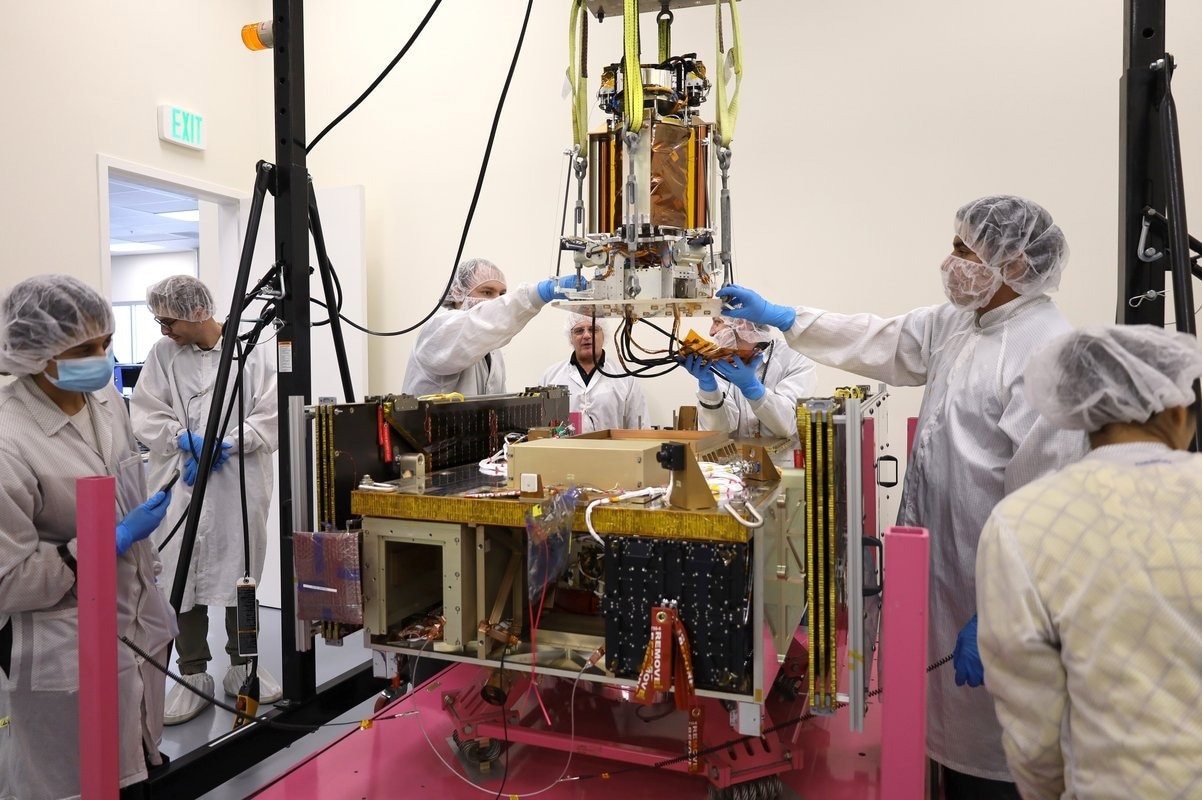Solar power has long been considered among the most popular renewable energy sources, with it representing one of the top five renewable energy sources in use today.

Image Credit: Caltech/Space Solar Power Project
In recent years, the advances in solar power solutions have come on leaps and bounds as new technology has burst onto the scene, increasing efficiencies and reducing costs associated with this technology. This expands the potential to reduce dependency on fossil-based fuels and deploy more environmentally compatible energy solutions to meet climate targets for 2030 and 2050.
Yet, there are still challenges to address, such as their weather- and light-related limitations which create intermittencies in solar power, and factors related to storage and distribution, which impact costs and energy wastage. Overcoming these issues is critical to meeting the aforementioned climate targets and helping tackle the climate crisis.
Researchers at the California Institute of Technology (Caltech) have been working on testing and unlocking the potential of space-based solar power (SBSP) on the recently launched Caltech Space Solar Power Project (SSPP).
Space Solar Power Demonstrator
Having launched a solar module known as the Space Solar Power Distributor (SSPD) as part of the Transporter-6 mission on 3rd January, the Caltech team will test a number of important aspects that would allow them to harvest solar power in space and contribute massively to the energy transition.
For many years, I’ve dreamed about how space-based solar power could solve some of humanity’s most urgent challenges… Today, I’m thrilled to be supporting Caltech’s brilliant scientists as they race to make that dream a reality.
Donald Bren, Caltech’s Board of Trustees
The SSPD weighs 50 kg and comprises three main components; DOLCE, ALBA, and MAPLE, each of which will test different technologies that the team is investigating under the project.
The DOLCE (Deployable on-Orbit ultraLight Composite Experiment) payload, which makes up part of the module, is an architecture that would eventually constitute a larger kilometer-scale power station, demonstrating how deployable structures can enable space-based solar power.
The photovoltaic (PV) cells required for the project are contained in the ALBA portion of the module. Here 32 different types of PV cells have been deployed to test and assess which kind of solar cell would be most effective and able to withstand the harsh conditions of outer space.
While the supply of solar energy is effectively unlimited in outer space as it is unhindered by cloud cover or the cycles of day and night, ensuring this supply is transmitted back to Earth effectively is vitally important to the mission.
This is where MAPLE (Microwave Array for Power-transfer Low-orbit Experiment) comes in. Here an array of lightweight microwave power transmitters control the focus of the power selectively on two different receivers with precision timing to facilitate wireless power transmission over extreme distances.
The entire flexible MAPLE array, as well as its core wireless power transfer electronic chips and transmitting elements, have been designed from scratch. This wasn’t made from items you can buy because they didn’t even exist. This fundamental rethinking of the system from the ground up is essential to realize scalable solutions for SSPP.
Ali Hajimiri, Bren Professor of Electrical Engineering and Medical Engineering and co-director of SSPP, Caltech
Clean Energy for the Future
The United Nations Panel on Climate Change has reported that by the end of the 21st century, the world could heat up by 4.5 °F (2.5 °C). That is over 1.8 oF (1 °C) above the threshold the international climate science community considers safe to avoid catastrophic consequences associated with climate change.
Solar power and PV cells have been around since the end of the 19th century and currently account for around 4% of the global energy supply. However, for the purpose of SSPP, many aspects of the technology had to be reimagined when attempting to unlock the potential of space-based solar power relative to the generation and transmission of power.
The primary goal of the SSPP project is to produce a cost-effective global supply of renewable, clean energy. However, when combining this ambition with space travel, the Caltech team had to find ways to make the technology compatible with cost-effective deployment and allow it to endure the harsh environment in which it would be launched.
While orbiting power plants that beam energy back to Earth sounds like something straight from the pages of science fiction, Caltech’s SSPP initiative could prove this to be a reality in the not-too-distant future and help meet 2030 and 2050 climate goals.
References and Further Reading
Caltech to launch Space Solar Power Technology demo into orbit in January (2023) California Institute of Technology. Available at: https://www.caltech.edu/about/news/caltech-to-launch-space-solar-power-technology-demo-into-orbit-in-january
COP27 Reaches Breakthrough Agreement on New “Loss and Damage” Fund for Vulnerable Countries (2023) Unfccc.int. Available at: https://unfccc.int/news/cop27-reaches-breakthrough-agreement-on-new-loss-and-damage-fund-for-vulnerable-countries
Disclaimer: The views expressed here are those of the author expressed in their private capacity and do not necessarily represent the views of AZoM.com Limited T/A AZoNetwork the owner and operator of this website. This disclaimer forms part of the Terms and conditions of use of this website.